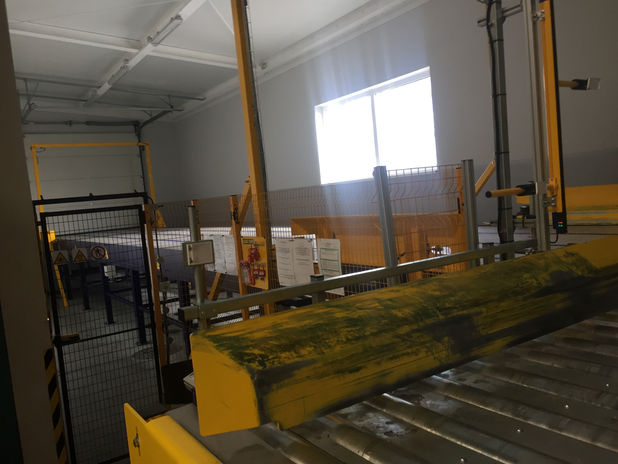PTM ALS system for brewery
Loading system with electrically powered semi-trailer and ramp floor

Stationary loading and unloading systems work not only as individual devices, but also as advanced system solutions, allowing to increase the efficiency of a given enterprise and optimize costs by reducing loading and unloading times, as well as increasing the safety of employees and goods.
It is possible to integrate them into existing production lines and supply chains over any distance.
The CargoMatic system supports the optimization of logistics processes, and is used in situations where delivery time becomes very important, whether for short-distance transportation or for multiple loading and unloading operations per day. It is designed for use in stationary locations, such as warehouses, platforms and unloading ramps, as well as mobile ones, namely semi-trailers. It can be built into both new and old vehicles such as vans, curtainsiders and refrigerated trucks.
Cargomatic is an electrically-powered semi-trailer and ramp floor, allowing pallets, drums, cartons and mixes to be transported both ways in 2 minutes. This is about 28 minutes faster than loading with a forklift by an operator. Reloading starts when two units meet at the ramp to form a 27 m synchronous line. Developed for installation in all types of semi-trailers, the system can be easily combined with all kinds of stationary systems (roller conveyors, chain systems, etc.).
The Stationary CargoFloor system, which is a hydraulically driven floor by 3 actuators, is used to move bulk cargo, similar to semi-trailers.
Using the Cargomatic stationary transport system, unloading or loading a 13-meter semi-trailer in a factory or distribution center can be fully automatic, without human intervention, and takes no longer than 90 seconds. Using it reduces the number of vehicles needed to transport finished goods and packaging.
The installation of 1 Cargomatic system on a ramp and a Cargomatic semi-trailer is on average the replacement of several semi-trailers with a manual loading system, thus significantly optimizing the use of warehouse resources. The benefits are primarily due to the increase in the number of shuttles per semi-trailer, as the time required to handle a semi-trailer has been reduced by about 80%.
An important element of the project is not only the optimization of processes and costs (return on investment), but also quality and environmental aspects. Additional benefits include ensuring high-quality loading and unloading of pallets with goods, better utilization of warehouse and production space, as well as a positive impact on the environment and reduction of CO2 emissions by reducing the number of km and mth of forklift operation.
LET US FIND THE BEST ATLS SOLUTION
FOR YOUR BUSINESS
.png)
















